Steps on the water. Development of the vehicle for the US Marine Corps resumed.
The BAE Systems-Iveco Defense Consortium offers a modified version of the SuperAV 1.1x8 combat vehicle for the ACV 8 program
In the long and costly process of replacing the Amphibious Assault Vehicle of the US Marine Corps, signs of progress have finally appeared. Recall history programs and its main stages.
Over the past few decades, the United States Marine Corps (ILC) has spent billions of dollars on numerous programs in the still futile desire to replace its tracked AAV-7A1 Amphibious Assault Vehicle amphibious assault vehicle from the Vietnam War.
The hull uses the AAV-7A1 series of vehicles to transport infantrymen from ship to shore from 1971. Despite the continuous upgrading of this platform, there are serious concerns not only about its lack of vitality in the face of developing threats, but also limited mobility on water and land, lethality, not to mention network capabilities.
In 2011, the ILC closed the Expeditionary Fighting Vehicle (EFV) combat expedition vehicle program, which for many years developed the replacement of the current AAV-7A1 platform. Its cost grew steadily, and the car showed poor performance during testing; net expenditures on it amounted to approximately 3 billion dollars. The high speed on the water, which they wanted to achieve from the EFV, was recognized as technically impracticable without a significant reduction in the level of survivability and mortality of the platform.
More problems
The Pentagon soon began two more programs for marine vehicles. The first was called the ACV (Amphibious Combat Vehicle) combat vehicle, it had to incorporate some of the design elements of the EFV project and replace the outdated AAV. The second vehicle, designated MPC (Marine Personnel Carrier - Marine Corps), was to operate in conjunction with ACV and serve as a specialized platform for the delivery of infantry to the coast.
Unlike AAV, EFV or ACV, the MPC was conceived not as a platform with full amphibious capabilities, but rather as a platform with buoyancy sufficient to overcome internal water obstacles, such as lakes or rivers, and to conduct operations without landing craft.
However, in 2013, the MPC program was also stopped indefinitely (and again due to financial problems), but later in March 2014, it was resurrected under the new designation ACV 1 Stage 1 Sub-Step (ACV 1.1). At present, despite the tortuous and disastrous start, the program for replacing the floating machine of the ILC has finally gotten off the ground.
The first draft request for proposals for ACV 1.1 was published by the office of floating machine programs in November 2014, and the second draft request was issued in January 2015.
The final request for proposals was published in March. This updated document details the revised requirements of the Corps for the first of a series of promising ACV vehicles that infantrymen will use to transport from ship to shore, ground operations and reverse self-return to the ship.
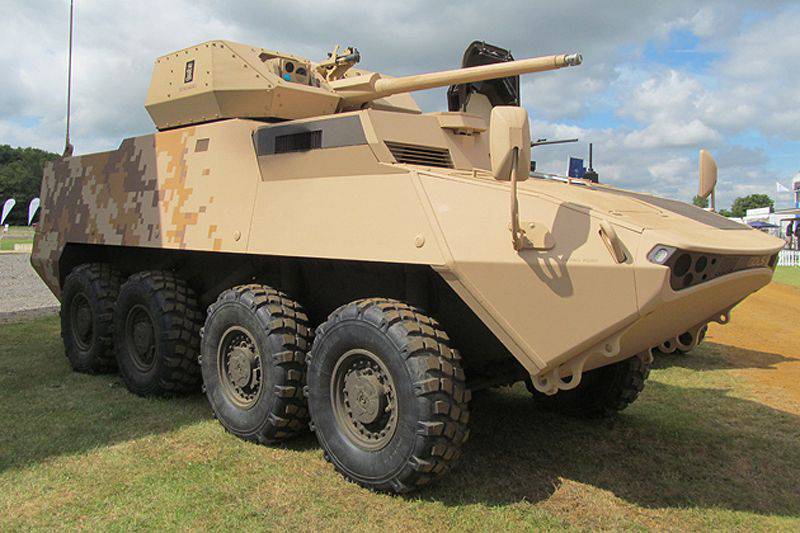
General Dynamics intends to offer a modified version of the LAV 6.0 machine for the ACV program.
Prototype Contracts
KMP is currently evaluating industry responses on an eight-wheeled combat floating machine optimized for land and coastal operations, with the prospect of issuing development and production contracts to two companies at the end of 2016; each contract provides for the manufacture of 16 machines.
Considering previous budgetary difficulties and striving to keep the cost reasonable, KMP chooses an affordable ACV project with a planned cost of no more than 5 million dollars apiece and hopes to achieve initial supply to the troops in 2020 and full combat readiness in 2023.
According to information from the request for proposals, KMP wants to receive a modified ACV project, in which the wheeled vehicle has cross-country ability as tank Abrams, and also has sufficient survivability and can withstand improvised explosive devices (IEDs), land mines, shell splinters and armor-piercing bullets from a heavy machine gun. The ACV will ultimately be armed with a large-caliber M2 machine gun and a remotely controlled combat module with the possibility of installing the MK19 stabilized grenade launcher.
The machine must provide secure mobility for 10-13 infantrymen and three crew members during ground operations and have the desired cruising range 480-800 km. When performing maneuvers from ship to shore and back, it must travel a minimum of 22 km at water at a maximum speed of 5-8 nodes. In addition, the ACV machine must cover open water with a height of 60 cm waves and a coastline with a surf height of 120-180 cm.
Phased approach
During the hearings in the Senate Armed Services Committee in March 2015, the Commander of the ILC General Joseph Dunford said that as part of the allocated budget, the ILC failed to develop an ACV capable of deploying from the deck of the amphibious ship, go to the coast and conduct ground maneuvers at a satisfactory level then a phased approach was adopted instead.
"We worked for a while to replace the 40-year-old Amphibious Assault Vehicle," said Dunford. “And two years ago we tried to combine protection that corresponds to modern threats, the cost we could allow, and, finally, the ability to parachute away from the coast or high-speed self-deployment. And it turned out that we cannot combine all three aspects. And so it was decided to split the program into three parts. ”
“In the first sub-step, 1.1 will immediately focus on ground combat vehicles with adequate protection for our infantrymen on the shore ... this vehicle will be moved from ship to shore in airborne assault vehicles. We expect our machines to operate on the shores of 90% of the time. That is, the first stage machine will be optimized for ground protection and movement on land. ”
Dunford continued further: “In the second stage, we must get a car with at least the same characteristics as the current veteran of Amphibious Assault Vehicle. That is, it may be self-loading on the landing ship. And from this point on, we decide to continue working on a self-developing high-speed machine, if by that time we combine the three variables that I have already mentioned. ”
He noted that another option is simply to continue to improve the platform of the second stage, that is, a car with similar or better capabilities than the current AAV-7.
"But ... the reason why we are where we are is that we simply could not combine these three things: the cost, the characteristics and the protection necessary against the current threats."
Patria AMV is the backbone of the Havoc machine - Lockheed Martin’s bid for the ACV 1.1 program
Promising results
Dunford was optimistic. Speaking about the current characteristics of the experimental machines, he noted that several machines showed themselves at the level corresponding to the next sub-stage.
“I visited the test center in Nevada ... to look at the current state of the machines. And to be honest, for me it was somewhat unexpected that things are quite normal. Although we requested a machine that simply provides ground mobility and is not necessarily a self-deploying machine, each applicant submitted a car that was actually very similar in characteristics to the requirements of the second sub-stage that we are going to conduct.
According to high army commanders, applicants for the ACV 1.1 ILC program begin to focus on the expected capabilities of the Increment 1.2 sub-step, which means that these two requirements will eventually merge.
Dunford noted that the biggest difference between the 1 sub-stage and the 2 sub-stage lies in the ability to actually deploy from the ship independently, without other means, stating that while the KMP intends to buy approximately 200 machines increment 1.1 and approximately 400 machines increment 1.2, "It is quite possible that the stages 1.1 and 1.2 can be combined."
A total of four teams proposed ACV projects, including modified versions of the already produced 8x8 armored personnel carriers in service: BAE Systems and Iveco with the SuperAV option; General Dynamics with an upgraded version of the LAV 6.0, similar to that operated by the Canadian military; SAIC and ST Kinetics with a Terrex machine; and Lockheed Martin with an unknown platform, perhaps a variant of Havoc.
The proposal for Terrex is most likely a modified version of the current platform similar to the one that is in service with Singapore. The main advantages of this machine is its amphibious qualities and the possibility of future upgrades. According to the company, having a total weight of 28100 kg, the machine can be unloaded from the landing craft to the coast and overcome the water section with wave heights up to 125, see.
However, when asked to clarify the details, all companies do not respond to requests and still avoid giving specific information to the media, citing secrecy.
Manufacturers of original machines say only that they are working to increase the speed of the machine on the ground and on the water, as well as to improve mobility and bottom protection.
HAVOC creation
Meanwhile, Lockheed Martin, previously united with Patria Land Systems to offer an AMV version 8x8 called Havoc, ceased cooperation with the Finns and this “union” broke up. The proposed option was a standard AMV model; This vehicle is currently being used in the armed forces of Croatia, Finland, Poland, Slovenia, South Africa, Sweden and the United Arab Emirates.
Havoc develops maximum speed on the 105 highway km / h and has a power reserve of 900 km, on the water it develops speed of 5 nodes at sea state up to Sea State 2 (waves in height from 10 to 45 cm).
John Kent, a spokesman for Lockheed Martin Missiles and Fire Control, said that the company "was completely committed to the ILC", however, he was careful about the details of the proposed solution that followed the divorce from Finnish Patria.
“Lockheed Martin is looking forward to presenting an ACV solution that will have significant growth potential for all promising ACV options,” he added.
“Before Lockheed Martin submitted proposals for ACV, both Lockheed Martin and Patria agreed to end cooperation on this program. For competitive reasons, we are currently unable to disclose information on our proposal. ”
Super car
According to the head of the direction for new and floating machines at BAE Systems, Deepak Bazaz, the offer for ACV 1.1 combines the basic performance qualities of SuperAV and the overall design approaches adopted for the Iveco Centauro family of machines.
The SuperAV machine has a mass of 28500 kg, develops speed 105 km / h on the ground and 6 nodes on the water, it contains 13 infantrymen, plus three crew members. It can be unloaded from the amphibious assault ship at a distance of 18,5 km from the coast, travel over land 320 km and then independently return to the ship.
“Our job was that we adapted this solution for the project on the amphibious platform, we took a lot from Centauro, but this platform was really designed from the very beginning as completely floating,” explained Basaz.
“We considered many partners and some of them are still in the game today. But we chose the company Iveco, the best, as it seems to us, because it has a wealth of experience in creating wheeled vehicles. It is one thing to take a ground vehicle and try to refine and prepare it for water afloat. And another thing is to design a car from scratch and from the very beginning to create it floating. And from the very beginning we considered SuperAV only as a floating platform. ”
“The SuperAV machine was created floating and its center of gravity and all other important characteristics, for example, a reserve of buoyancy, that is, everything that is important for a floating machine, all these issues were solved directly and immediately after the issuance of requirements. Iveco has a rich history, thousands and thousands of 4x4, 6x6, 8x8 machines, we looked at it, and saw a good match with what we are doing. ”
Innate abilities
He added that since ACV is a true amphibious solution, one of the most important characteristics of the new vehicle is its ability to parachute and return to the landing craft.
“These must be inherent qualities,” he continued. - And no one understands this better than BAE Systems, because we are the head manufacturer of the current AAV machine for the ILC, for which the most important is the ability to unload and load the vehicle onto the ship and have good amphibious characteristics. We have really been producing AAV cars for decades, including for export, and we designed the first car about 70 years ago. We definitely have a lot of experience and we use it in our decision on the 1.1 sub-stage. ”
Bazaz said that the best solution for the KMP would be to get a completely ready, affordable machine that would meet most of the threshold and target requirements, since the latter would open the way for the ACV 1.2 sub-step.
“Our proposal really answers this. It is very accessible, as it is based on price criteria determined by the Corpus, but on our part, we are really in good shape. The most important feature for 1.2 is the ability to leave the ship, reach the coast and return to the ship. This requirement of the 1.2 sub-step — the ability to return to the ship — we have already demonstrated during the trials. ”
The cooperation of BAE Systems and Iveco began in the KMP project on the MPC machine, which ultimately became the predecessor of the current ACV program.
“The machine we offered for the MPC program is very similar to the one we offer for the ACV 1.1 program. With this machine, we passed the MPC program and performed the full range of various tests, ranging from tests for survivability, sea trials with thousands of kilometers traveled, tests at sea and ending with unloading from a ship and returning to it, ”added Bazaz. “She showed herself very well during the tests and demonstrated that we can meet some future requirements.” He noted that some of the requirements in the request for proposals for ACV led to minor modifications to the design of the machine. In order to meet the requirements of the ACV 1.1, the company refined two positions: re-assembled the reservation amount to accommodate an additional assault force and changed the bottom armor to meet more stringent anti-explosion requirements.
“One of the reasons why we chose the Iveco car is its growth potential and, although we had a 10 man plus three people in the MPC project, we realized that we could put airborne people in the 13 car and we did it.”
Bazaz continued: “Therefore, we can carry additional cargo, deploy infantry from 13 people inside. That is the full detachment that the Corps needs, which can get out of the car and fight. And we still have enough buoyancy, a large enough part of the car looks out of the water and therefore no need to worry too much. ”
The ST Kinetics Terrex machine has already passed complex amphibious tests as part of the now closed MPC program.
Future requirements
In addition to the 13 man capacity requirement, which is part of the ACV 1.1 requirements, the vehicle must be able to accept additional functional weapons systems, such as a remotely controlled combat module (SDM).
“This requirement has been defined and we have already demonstrated the ability to comply with it in the MPC project. We analyzed what we can do on this platform. The installation of the DBMS is already calculated and we can afford it. Without a doubt, we can also provide MRAP protection levels or even higher, and this will not worsen anything, since you are going to land most of the time ”.
Regarding the expanding requirements of the ILC to a floating machine. Bazaz noted that the fundamental difference between the EFV program and the existing ACV project was the ability of the machine to overcome long water obstacles.
“The fleet wants to stay far enough from the coast, but it will have ACV delivery vehicles to the coast or the same landing craft that will come closer than 12 nautical miles to the coast and land these vehicles into the ocean. As for the previous EFV project, the KMP was going to parachute and cover the entire distance, but at the present time it just lost its meaning, since there were new threats that the marines must now cope with. ”
Achievements of goals
Bazaz explained that the company's approach to the ACV competition is that the 1.1 sub-stage is considered transitional, and the car must have redundant capabilities from the very beginning in order to facilitate the transition to the next sub-stage.
“We thought that in order to reduce the overall risk of the program - since we already had a mastered machine - the best approach would be to provide capacity for upgrades and maintain coordination from the very beginning, so that switching from 1.1 to 1.2 would not require much improvement. You do not need a significant technological gap in this process, because every time you do this, you put the entire program at risk. That is, we are really engaged in the 1.1 sub-stage, but at the same time we are accumulating all the opportunities for the 1.2 stage. ”
For future contracts, they are expected at the end of 2015 or at the beginning of 2016.
“Everything is based on the Pentagon’s approval for issuing a contract to two suppliers from four applicants,” added Bazaz. - Under this program, the delivery of machines should begin nine months after receiving the contract. That is, most of the project and everything else needs to be done before receiving the contract. Since we already have a solution on hand, we are constantly refining and even now in order to prepare and meet the deadlines. ”
While the car replacement program began to gain momentum, the ILC should simultaneously support the capabilities of the existing AAV-7 Amphibious Assault Vehicle machines, which most likely will not be removed from service until the 2035 year.
“Since our company is the developer and manufacturer of the current AAV-7A1 combat vehicles, we plan to carry out a certain modernization,” said Bazaz. “Of course, we can call it a modernization, but in reality it will not help these cars that have seen it.”
“From the point of view of the philosophy of the floating machine, I think the ILC understands that the ACV program is really where to start the modernization. AAV machines do a lot of work when they make their way to the coast, but when you disembark, real problems begin and therefore to eliminate all problems, the ILC speeds up the ACV 1.1 program, followed by the 1.2 program. ”
Materials used:
www.shephardmedia.com
www.baesystems.com
www.lockheedmartin.com
www.generaldynamics.com
www.stengg.com
www.wikipedia.org
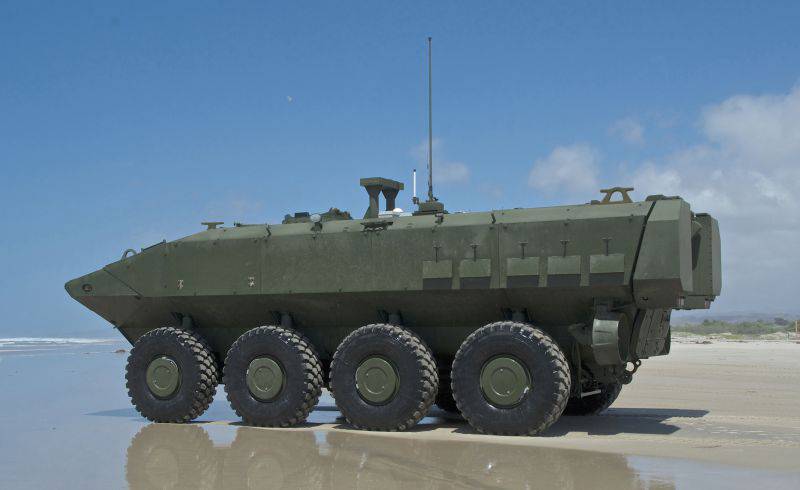
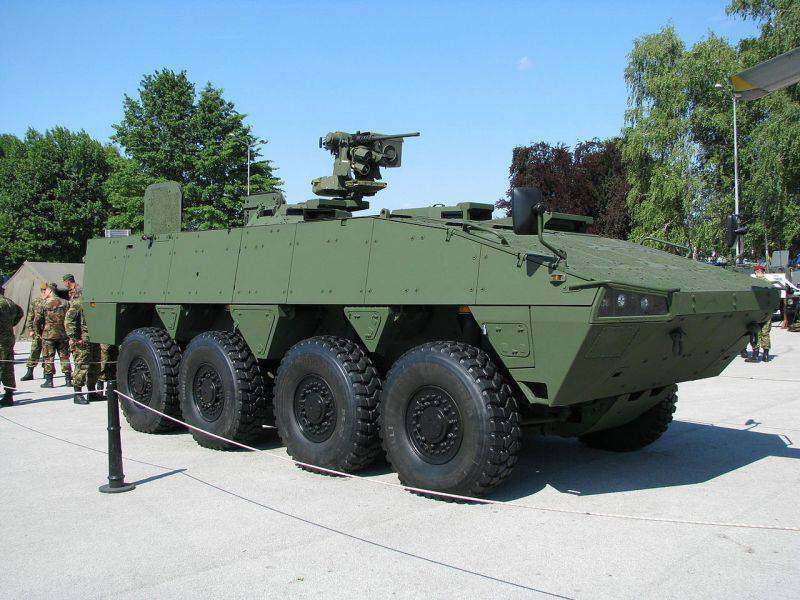
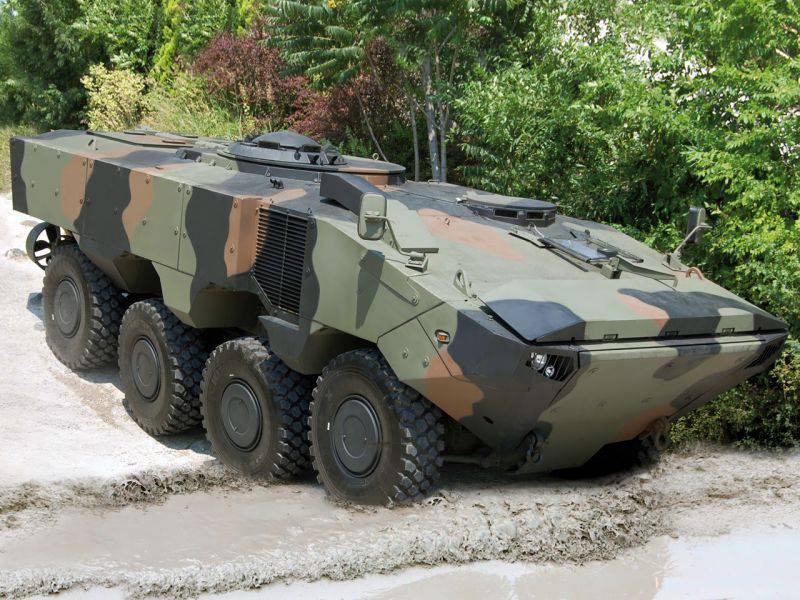
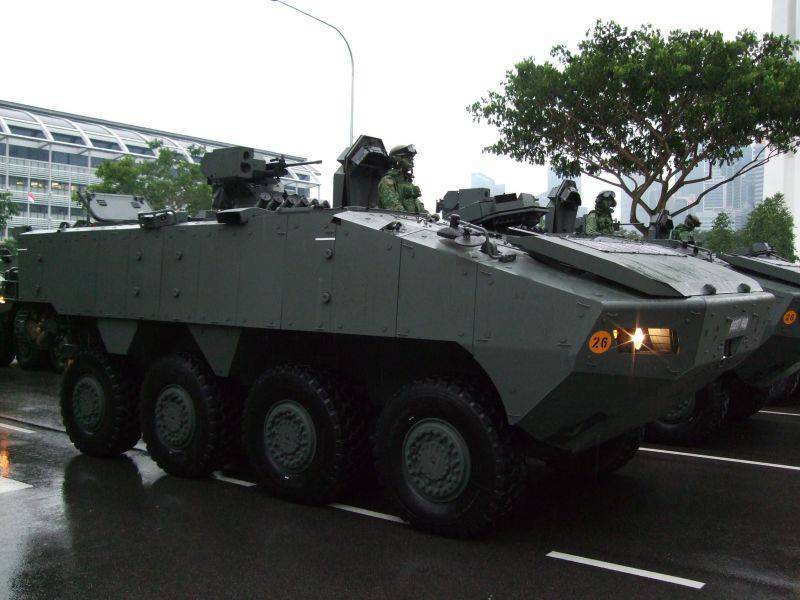
Information